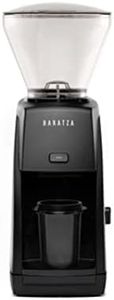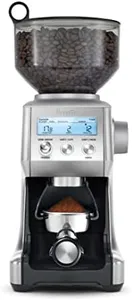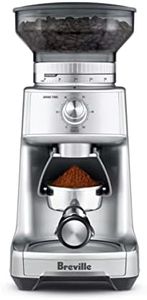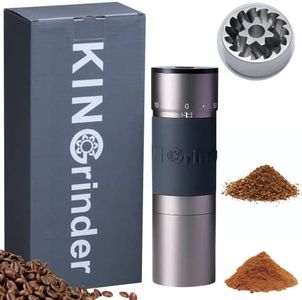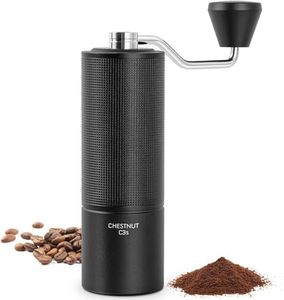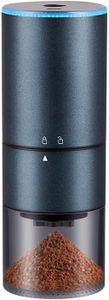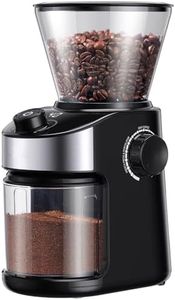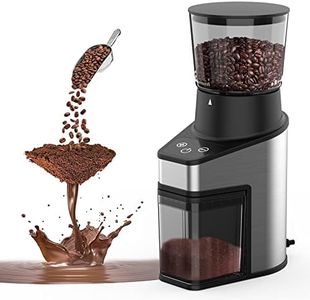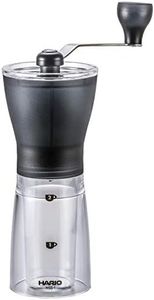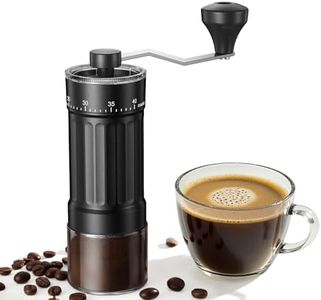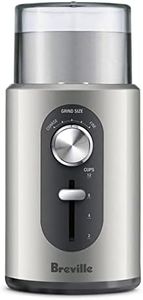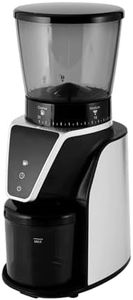We Use CookiesWe use cookies to enhance the security, performance,
functionality and for analytical and promotional activities. By continuing to browse this site you
are agreeing to our privacy policy
10 Best Burr Grinders
From leading brands and best sellers available on the web.Buying Guide for the Best Burr Grinders
Choosing a burr grinder is an important step if you want to make great coffee at home. Burr grinders crush coffee beans between two rough surfaces (burrs), producing a consistent grind, which is crucial for better flavor extraction and more enjoyable coffee. To pick the best burr grinder for your needs, it's important to look beyond the design and style, and focus on the key specifications, understanding how they affect your daily use and the quality in your cup.Burr MaterialBurrs are usually made of steel or ceramic. Steel burrs are durable, precise, and handle heat well, making them suitable for most coffee styles; they're a common choice for home use. Ceramic burrs last longer and are less likely to heat up, which reduces the chance of burning the beans. However, they can be more brittle if dropped. If you plan to grind coffee daily and value long-term consistency, steel burrs are solid; for those focused on longevity and flavor purity, ceramic is worth considering.
Burr Shape (Flat vs. Conical)The two main burr shapes are flat and conical. Flat burrs provide extremely even grinds, which is great for espresso and those who want to fine-tune their coffee. However, they can be noisier and may retain more grounds. Conical burrs are quieter, easier to maintain, and often more forgiving—great for filter coffee, French press, and everyday use. If you want maximum precision, flat burrs are ideal; for most users seeking versatility and simple operation, conical burrs are a preferred choice.
Grind Size SettingsThis refers to how many grind adjustments the grinder offers. Grinders may have a handful of settings or many more for fine-tuning. More settings allow you to experiment and precisely match the grind to your chosen brewing method, from espresso (very fine) to French press (coarse). If you stick to one brewing method, fewer settings might be enough; if you enjoy exploring different coffee types, look for a grinder with a wide range and easy adjustment.
Grind ConsistencyGrind consistency means how uniform the coffee grounds are. Consistent grinds extract more evenly, resulting in better tasting coffee. The design, build quality, and alignment of the burrs affect this most. For espresso, which is sensitive to grind size, high consistency is critical. For drip or French press, moderate consistency is usually sufficient. If you're a perfectionist or love espresso, prioritize excellent consistency—otherwise, good general performance will suffice.
CapacityCapacity tells you how many beans the hopper and grounds container can hold. Higher capacity suits households brewing several cups at once or for entertaining, while smaller capacity means a more compact, fresher-grind experience for single-cup drinkers. Think about how much coffee you make in one session—choose a size that fits your daily habits, not just the biggest option available.
Ease of CleaningGrinding coffee creates mess—oils, fine dust, and leftover grounds. Some grinders are easy to take apart for cleaning, others less so. Regular cleaning keeps your grinder working well and your coffee tasting fresh. If convenience matters or you dislike maintenance, check that the burrs and chambers are easily accessible and simple to clean.
